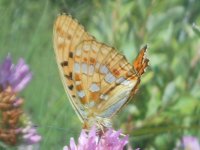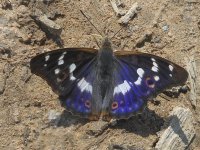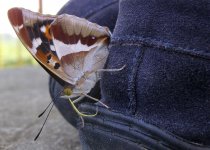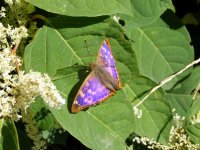Andy Adcock
Worst person on Birdforum

Hi all,
limited experience with HB and none of Niobe so appreciate any pointers. I'm currently in St Petersburg, Russia and on the edge of the range for both species.
What I can glean from Collins, post discal spots here are very weak for Hb and underside veins do seem black to me. Small spot near cell base is absent which means it should be High Brown?
I'd also like to share a little received wisdom from last year when I was struggling to separate Purple from Lesser Purple Emperor. The very obviously orange tip to the antennae is diagnostic apparently of Lesser, a feature I haven't seen mentioned in any literature I have? Both pics from today.
Andy
limited experience with HB and none of Niobe so appreciate any pointers. I'm currently in St Petersburg, Russia and on the edge of the range for both species.
What I can glean from Collins, post discal spots here are very weak for Hb and underside veins do seem black to me. Small spot near cell base is absent which means it should be High Brown?
I'd also like to share a little received wisdom from last year when I was struggling to separate Purple from Lesser Purple Emperor. The very obviously orange tip to the antennae is diagnostic apparently of Lesser, a feature I haven't seen mentioned in any literature I have? Both pics from today.
Andy
Attachments
Last edited:









